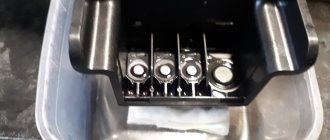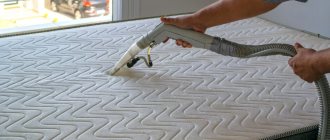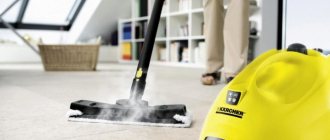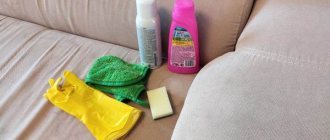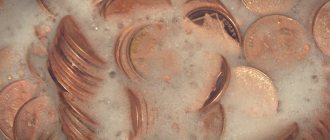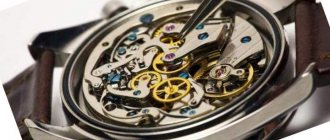Photo drum (photo drum) is an internal part of the laser cartridge with which printing is performed. The drum resource is more than 10,000 pages. However, due to low-quality toner, high room humidity, or temperature changes, the photo roller may begin to print pages with defects: a gray background, stripes, blots, and dots.
Most of the above problems can be solved by cleaning the photo drum. It is produced at the MiraxPrint service center and is included in the cost of refilling cartridges. Thus, we provide our customers with the opportunity to save money not only on printing, but also on the maintenance of office equipment!
However, those users who are accustomed to doing everything with their own hands can familiarize themselves with the recommendations from the specialists of the MiraxPrint service center in order to properly clean the photodrum, while avoiding damage to an expensive part.
Cleaning the photo roller yourself may cause damage. In this case, you take full responsibility for the performance of the part.
When do you need to clean the photoconductor?
The answer to this question is quite simple - when flaws appear on printed pages.
Signs indicating contamination of the photo roll:
- The appearance of black symmetrical dots.
- Formation of dark stripes.
- A gray background appeared on the documents.
The OPC surface is covered with a sensitive photolayer that can be exposed to light. In these places, toner powder adheres to the drum axis and is then transferred to the paper. Due to the limited operational capabilities of this part, the top layer wears out, which forces owners of office equipment to carry out restoration of the photodrum in specialized services. The service life of the photosensitive drum can reach 40-80 thousand printed pages, but in printers for home and small offices this figure reaches 12-15 thousand.
DIY photo drum polishing
STARTCOPI CONFERENCE Printers, copiers, MFPs, faxes and other office equipment: issues of repair, maintenance, refilling, selection
0. MegaByte
06.01.15 12:41
The New Year holidays were a success.
2. MegaByte
01/06/15 12:47
(1) Yeah corporate party is his mother))
The friendly Chinese seem to have a machine for restoring photo layers. It costs as much as half a Boeing, plus expenses. And we need it.
And at home only OLS.
5. todenkopf
01/06/15 12:54
Instructions: 1. buy a new drum 2. throw away the old drum
6. MegaByte
01/06/15 12:55
(3) well, it’s clear that it costs a lot. How can I find out the addresses? I need to start the entire technological process from scratch onto a bare blank)
Software cleaning
Many inkjet machines are equipped with built-in automatic cleaning programs. To carry it out, proceed as follows:
- open the control panel;
- go to the printing equipment settings;
- there select the required section - “Remedies and cartridge cleaning”;
- make a test print of a blank sheet.
If the function is missing, you can download the program from disk or the Internet and install it. Then in the print settings, select the “Printer Maintenance” section, then you will need to open the print settings and start cleaning. In this case, you must follow the instructions of the program. Most often, the procedure must be performed repeatedly.
When the software method does not help, then you can get rid of the problem in several other ways. For different models of inkjet technology, the algorithms are the same, only the method of accessing the cartridges differs. To do this, you may need a set of screwdrivers with different bits.
The operation scheme, regardless of the chosen cleaning method, is as follows:
- removing the cartridge;
- soaking;
- washing;
- drying;
- gas station;
- installation in the printer;
- control printout.
Fault prevention
Any equipment requires proper care and operation. This helps to avoid many problems. In order for the printer to serve for a long time and without failures, it is enough to follow the following recommendations.
- The room in which the printing equipment is located should be kept clean. Wet weekly cleaning is necessary, since dust is the worst enemy of a printer or MFP.
- You should carefully clean the printer with a vacuum cleaner once a month. This will collect dust particles and ink (for laser printers). Areas wet from paint should be removed with a rag.
- Every printer has a software method for cleaning the printer head. How to start it can be found in the instructions for the device. This cleaning should be done regularly.
- If the printer is color, and most often only black text is printed, then it is worth doing a color test print once a week. Otherwise, the paint may dry out and clog the nozzles.
- When refilling laser printers, experts recommend cleaning the waste ink bin regardless of its filling level.
When cleaning the cartridge, you do not need to do any complex manipulations, but the procedure itself is quite labor-intensive. The easiest option when working independently is to use special built-in programs. If none of the methods considered leads to the desired result, then it is necessary to remove contaminants from the equipment involved in printing. When this does not help, you should contact the service center specialists. They will accurately determine the cause of the problem and recommend options for eliminating it.
Clearing printer settings from memory
Some printers store setting information in non-volatile memory, which is retained even if the machine is unplugged. This includes information such as network settings and paper settings. Clearing this memory, also called a cold reset, returns your printer settings to the manufacturer's default settings. This can solve complex printer problems, but is not required to deal with stuck print jobs. The process for clearing permanent memory varies depending on the make and model. For example, many HP LaserJet printers require you to hold down the Go button while rebooting the machine.
Hello friends, today I decided to write an article about a fairly common problem. The problem is related to when the print queue hangs in Windows operating systems. This problem prevents new documents from being sent for printing, so here I will describe several ways to clear the print queue.
When is it time to clean
The printer requires periodic cleaning. This process will significantly extend the life of the device. Determining the need for cleaning is not so difficult, but this may not always help. Therefore, experts do not advise waiting for signs, but carrying out activities regularly for the purpose of prevention. Precursors to cleaning the printing device may be:
- Extraneous sounds during operation.
- Poor print quality. For example, stripes.
- Ink or toner stains smear the sheets during printing.
- Frequent paper jams.
- Any deviation from the usual form of work.
Photodrums play the following role.
They are first charged with an electrostatic field so as to repel toner powder particles. Then, using light, part of the surface of the photodrum is illuminated. In this case, the illuminated surface is charged with the opposite sign and now, on the contrary, attracts toner particles to itself, where they stick. The drum is rolled over a sheet of paper and simultaneously discharged. Therefore, toner remains on a sheet of paper in some places, but not in others (after all, the toner does not stick to the drum everywhere). The sheet of paper will then go through a special high-temperature oven where the toner is baked onto the areas of the paper where it hits. This is how an image is obtained on paper, the same one that the light illuminated on the photodrum. In laser printers, the role of light is performed by a special laser beam. He draws a mirror image of the sheet on the drum. In copiers, the role of light sources is performed by special LEDs, which also illuminate a mirror image of the printed sheet on the drum.
How does a photodrum work and what are its functions?
After receiving a print job, the cartridge's photodrum is charged by an electrostatic field and gains the ability to repel toner microparticles.
The laser beam then draws a copy of the text or image sent for printing onto the surface of the photodrum. In those places where the laser touches the surface of the photodrum, a positive charge appears, which attracts toner particles. After this, a future image is formed on the glossy surface of the photodrum, which will subsequently be transferred to a sheet of paper. Over time, and if we have refilled our toner several times, we may begin to experience poor quality in our printed documents. It may be that the cylinder block is not completely damaged, if we see that the pages, even the last ones coming out, are of good quality and fill our needs, then it is time to clean the cylinder and save money that we will need to buy another new cylinder.
Do not clean the cylinder from exposure to the sun, it is damaged without protection. We remove the gripper with the cylindrical assembly on one end, this is what we are looking for to remove the cylinder to expose the damaged toner tank. The damaged toner tank is the amount of dust that is used for printing that does not stick to the paper, it is called damaged toner tank because it is not used again, when it goes into the damaged toner tank, it is mixed with pieces of paper and dust taken from the environment where the printer is located, if we return it to the toner, we will end up with very faded and unprincipled pages.
Rolling over a sheet of paper, the photodrum transfers toner particles onto it, and the image from the photodrum is transferred to the paper. But this image is not yet stable and under mechanical pressure it is smeared and loses its structure. To fix the toner, the paper goes into a special oven, in which the toner is fused into the paper under the influence of high temperatures.
Now proceed to disassemble and clean all the damaged deposit with toner, if we have a vacuum much better, it is recommended to cover all the respiratory tract, we avoid the dust between our body can cause breathing problems even allergies.
We remove everything very carefully, checking where each part goes, we vote the dust in a place where it cannot be cleaned over time, it is even recommended to have it in a bag and seal it after throwing it. Clean all the pieces you can use with a damp cloth, do it in a way that the pieces don't stain the pages, in this case it wouldn't be for dust spilling if not because the pieces are dirty, remember how each piece goes, and they are all placed in his place again. If you can take much better photos of the entire process, it will help to remember where each part goes.
The photodrum resource is designed for several tens of thousands of copies. After the end of its service life, the glossy surface of the photodrum wears off and wears out. The first sign of drum wear is black streaks along the edges of the sheet that appear during printing. If such stripes appear, the photoconductor must be replaced with a new one.
The lifespan of the printer's photodrum depends on the printing conditions. Many drums make several idle revolutions before printing begins and after printing ends. Therefore, the image drum will last longer when printing jobs of 50-100 sheets than when printing jobs of 1-2 sheets.
If you decide to change the toner in the cartridge yourself, remember that the photoconductor is a light-sensitive element that can glow when exposed to direct sunlight.
Therefore, refilling the cartridge should be done in a dimly lit room.
Prints from a cartridge with an exposed photoconductor appear as completely black sheets of paper. To restore the operation of a damaged image drum, you need to send several copies for printing. Each subsequent copy will be lighter than the previous one, and eventually the performance of the drum will be restored. In some cases, exposure to light can lead to complete failure of the photodrum. Therefore, protecting the photodrum from exposure to light is a logical measure when cleaning the printer mechanism or replacing toner.
The photodrum of a laser printer should be handled very carefully, since any scratch, even the most insignificant, as well as a greasy imprint on its glossy surface that is not visible to the eye, reduces print quality and shortens the life of the drum
Cleaning steps
- Turn off the printer or MFP by unplugging the power plug from the outlet.
- Open the front cover of the print compartment, where the required part is located.
- Remove the cartridge or drum cartridge from the slots and place it on a flat surface covered with newspaper or oilcloth.
- To get to the OPC installed in the drum cartridge, simply remove the protective shutter. To access the drum, which is part of the cartridge, you must follow these instructions:
- Remove the mounting clips located on the front and rear sides.
- Remove all screws that hold the side covers.
- Using a flathead screwdriver, pry up the sides and remove them.
- Carefully remove the primary charge roller and gear unit.
- Unscrew the 2 bolts securing the squeegee and remove it from its seats.
- Next, grasping the edges of the axle, remove the photodrum.
- Clean the surface of the mechanism thoroughly.
- Reassemble the cartridge in the reverse order, simultaneously treating the contacts of the working units with lithium grease.
- Insert the cartridge or drum cartridge into the laser printer, plug in the equipment and start printing.
- Drum cleaning has been successfully completed!
If after following all the recommendations the print quality has not improved, we recommend that you contact an office equipment service center for help. The photo roller may be worn out and needs to be replaced. Also, do not exclude the possibility of failure of other components of the cartridge, such as the magnetic roller or dispensing blade. In this case, you need to call a technician to your home so that he can diagnose the printing system and, if necessary, carry out a full repair of the cartridge.
The main part of any laser cartridge is the photoconductor, which is a shiny shaft that has a light blue or light green color, but other colors are also available - it depends on the manufacturer of the photocoupler. Its surface is covered with a special photo layer.
The service life of this part is quite long, but it is directly dependent on factors such as the quality of the paper used for printing, the type of toner, as well as the temperature and humidity of the room. Consequently, the photo shaft may fail prematurely.
The human factor cannot be ruled out - after all, along with the paper, various foreign objects and substances can get into the printer, which, in turn, can damage or contaminate the photoreceptor. Sometimes, when using low-quality toner, it can remain on the drum, as a result of which the print quality begins to suffer greatly. Therefore, there are situations when you need to clean the laser printer drum.
In general, cleaning a laser printer drum with a competent and thorough approach is not so difficult. It is necessary to begin solving this problem when, after printing documents, all sorts of defects remain on the sheets in the form of a gray background, black stripes and dots. In some cases, the toner may not be compatible with the photo roller. For this reason, in order to achieve truly good quality printing, it is necessary to use the photo roller and toner from the same manufacturer. Otherwise, over time, you may even need to repair the photodrum (but more often it’s just replacing it), which is unlikely to be done on your own.
Design and principle of operation
The photodrum is a rotating shaft that is located in the center of the cartridge, and its edges are attached to special bearings. The device is coated with selenium and is most often blue or green. Experts identify the following working layers of the shaft:
- charge transfer;
- charge generation;
- base coat;
- electrically conductive base.
The operating principle of the device is based on projecting a light image onto a selenium coating, during which the coloring element adheres to the illuminated area of the shaft. During the rotation of the device, the paint is transferred to a sheet of paper, and under the influence of high temperatures it melts and sticks to it.
A refilled and working cartridge is capable of producing more than 10,000 pages of printed text. This indicator may vary depending on the type of toner, room temperature, humidity and paper quality.
The following factors can reduce the working life of a photo roll:
- frequent single printing;
- using a coloring agent with large particles of pigment;
- use of rough and damp printing paper;
- sudden temperature fluctuations in the room.
How to Clean an Inkjet Printer
An inkjet printer has its own specific problems. It contains many more different parts that will need to be cleaned. Let's look at each element in detail.
Cartridges and CISS
The most problematic is the cartridge. In many device models there may be several of them at once. At least black and one or three colored ones. Each requires care and washing. These procedures can be performed in two completely different ways. The first option involves the use of special software for such purposes, and the second - physical effort.
If the inkjet printer cartridge is dry. Detailed description of washing and cleaning steps at home.
The continuous ink supply system is less demanding, but also requires little attention
If the print quality drops, then, first of all, pay attention to the presence of air in the ink supply tubes. Another problem could be a clogged air filter.
The problems need to be fixed. You can do this yourself.
Cleaning the tray, rollers and nozzles using a special program
When traces of ink begin to appear on a sheet of paper after printing, which, of course, shouldn’t be there, then the printer tray says “hello” to you. It clearly needs cleaning. And if the device begins to have difficulty gripping or pulling paper during printing, then the trouble is clearly with the feed rollers
They need to pay attention in such a situation. Over time, they can become clogged with dust or even wear off.
If the teeth wear out, they will need to be completely replaced.
To clean the tray and rollers of the inkjet printer, use software designed for such purposes. It can already be installed on the computer automatically when the drivers are installed. In some cases, you need to do the installation yourself. You can easily download such software on the website of the manufacturer of your device. To get to the “Maintenance” section, where all manipulations are performed, you need to find your model in the list in the “Devices and Printers” section of the control panel. Right-click on it and select “Printer Properties”.
To clean the nozzles, use the “Cleaning” and “Deep Cleaning” menu items. The nozzles of an inkjet printer are much more sensitive than any other part of the device. They can become clogged or dry out after a short period of inactivity, so the software cleaning method does not always help, but such a procedure is recommended. In most cases, it often comes down to physical manipulation. As one of the first options to try something, this method is suitable for all technology users.
Diapers
The diaper in an inkjet printer is a special absorber that helps the printer stay clean for a long time. The diaper is made of special foam rubber or felt, which has the property of absorbing paint well. This prevents it from getting inside the printing device and its individual elements. As a result, only the absorber has to be cleaned of dried paint. If you have extra money, then it is not necessary to wash the diaper; you can easily buy it at any computer store or order it online. The only negative is the cost.
This thing is much more demanding to clean, but even an inexperienced person in these matters can do everything. To clean, follow the following list of procedures:
- Open the printer cover.
- Remove the diaper.
- Place it in a previously prepared container with warm water.
- Give dried paints a little time to soak.
- Next you need to squeeze out the water.
- Rinse under running water until the paint is completely washed out.
- Dry the product.
- Place it back in its place in the printer.
Solution to the “Ink absorber is full” error in Canon printers We tell you what to do in a situation with the problem of a full diaper.
Resetting Epson diapers with a special program Detailed instructions for owners of Epson devices.
Signs that cleaning is needed
The fact that there is a need to inspect inkjet printer cartridges is evidenced by a number of printing defects, the main ones of which are the following:
- the templates on the test printouts contain uneven or unclear lines;
- During operation of the device, ink blots appear on the sheets;
- one or more colors are missing when printing the test pattern;
- When photographs and other color images are taken, horizontal streaks appear on the paper.
Poor print quality
The defects discussed are typical for different device models, for example, Epson, HP, Samsung, Canon. When rebooting does not help get rid of the unpleasant phenomenon, then you will need to clean the device cartridges. There are several reasons why you need to do this regularly:
- during downtime, it may happen that the paint in the nozzles has dried and will need to be removed to remove blockages;
- dust from the air settles inside the printer, especially on ink-coated components - the print head, cartridges.
For laser devices, cleaning is carried out when replacing the toner. At the same time, old ink and other contaminants are removed from the cartridge. The work is carried out using napkins, cloth or a lint-free brush. It is important that the electrical contacts remain clean. The work is carried out according to certain algorithms and does not require special skills.
Rules for cleaning inkjet printers
The design of an inkjet printer is slightly different from a laser printer. There are more parts that need to be disassembled and cleaned individually.
How to clean the cartridge and CISS
Cleaning the cartridge depends on the printer model. How to clean a printer cartridge if sometimes several elements with coloring pigment are found at once? Each of them must be cleaned separately using a special program or manually. As with inkjet printer cartridges, alternative methods of "hot steam" and soaking work.
After cleaning, allow the cartridge to dry.
The continuous ink supply system (CISS) helps the equipment owner save on original production pigments. As soon as you change the ink manufacturer, you need to wash the CISS. Otherwise, the printing will be of poor quality, and the printer may suddenly break down.
It is recommended to wait a day before putting the cartridge back into the printer.- Using a medical syringe, use a medical syringe to remove any remaining coloring pigments through the filling holes.
- Using a screwdriver, unscrew the chips and data blocks. Use a syringe to remove the ink from the cartridge and remove the cable.
- Pour washing liquid into the microwave tanks, and then drain into any container.
- The filling agent can be refilled several times until it is completely clean.
Cleaning the rollers, tray and nozzles
Window cleaner is often used to clean the nozzles. This is a budget and effective option.
- Remove the cartridge and immerse it in a container of glass cleaning fluid.
- The level of cleaning fluid should be such that it does not touch the contacts, but the nozzles are submerged.
- Secure the cartridge so that it does not accidentally tip over, and leave it in this position for a day.
- Dry the cartridge. He's ready to go.
The main thing is to follow safety precautions and use nozzle cleaners that are harmless to the nozzles.
The roller feeds the paper for printing. This is where dust, dirt and remnants of coloring pigments accumulate most actively. Since it is freely accessible, the printer does not need to be disassembled. Simply spray a piece of paper with window cleaner and run it through the roller to print.
The use of acetone and other aggressive compounds is not recommended, as they can “burn” the nozzles.
Cleaning the tray or internal components of the printer is carried out using a software method.
- Load a sheet of paper folded in half into the rear tray.
- Using the settings button, press + until the number 9 appears.
- Select Black mode.
- The paper will pass through the printer and clean the tray along the way.
Cleaning the diaper
A diaper is a special felt pad that absorbs ink while the printer is operating. As soon as the absorbent element is overfilled, the equipment is blocked. The used diaper can be thrown away and replaced with a new one.
Contact your service center if you do not know how to clean the printer.
If you don't want to wait or contact a service center, try washing it yourself.
- soak the diaper in a bucket of warm water for half an hour;
- Wring out and rinse the accessory under running water;
- repeat the procedure if the paint is not washed off on the first try;
- dry well and insert into the printer.
Inkjet machines have hardware cleaning capabilities, which simplifies the maintenance process.
After cleaning yourself, the adsorbent element may become slightly matted and decrease in size. But it is serviceable and can perform its functions.
Hot method
If even the cold soaking method does not give the desired result, it’s time to move on to the hot cleaning method. There is nothing complicated about it either. At its core, it is almost no different from the cold method, except that the water used for soaking must be hot.
Dilute the detergent in a container with hot water and immerse it in the resulting solution so that it goes under water. Next, it should be left to soak in the hot solution until the water reaches room temperature for about 30-40 minutes. This method can revive even the most dried-out paint and even when the printer has not been used for a very long time.
You can also clean the inkjet cartridge nozzles using steam. To do this, you need to take a steam generator for clothes, and if you don’t have one, a regular electric kettle will do just fine.
You should boil the kettle, lock the auto-off button so that the kettle does not turn off while boiling, and carefully bring the cartridge with the nozzles to the spout of the kettle, from which steam will come out. It should be kept at a distance of 10 centimeters from the spout of the kettle.
Holding it over the steam for 1-2 minutes is enough, after which the kettle should be turned off, and after cooling, rinse it, since during the soaking process, ink may drip onto the kettle. The cartridge must also be wiped dry with a lint-free cellulose or paper napkin and left to dry with the nozzles facing up on a horizontal surface for about 30 minutes.
If everything is done correctly, but the printing problem has not been resolved, you will have to contact a specialist. Perhaps the cause of the breakdown is that the paint in it has not dried, and the cartridge needs to be replaced, since it has served its entire useful life. And in order not to subsequently encounter problems with dried paint, it is best to carry out regular, at least once a month, light cleaning and inspection of the device parts. In this case, all printed documents will be guaranteed to delight you with image quality.
How to clean a printer: step by step
To clean the printer, you need to carry out a number of simple but time-consuming tasks:
- First, you need to unplug the printer, lift the lid and completely clean the rollers of dust using a dry cloth.
- Then remove the toner cartridge and wipe it with a disposable cloth.
- Then you should remove the dust-protecting glass and wipe it with a special cleaner and wipe it dry with a paper napkin.
- The last step will be to return all components to their place in the order in which they were removed.
To clean the printing device, you need to lay a bandage in several layers or cotton cloth on the bottom of the prepared plastic container, and then pour in the washing liquid. Then you should remove the print head from the switched off printer and place it in a container with liquid with the ink compartments facing down. Place a tube on the receiving fittings and first remove the gaskets. After removing the gaskets, rinse them well in liquid and dry. Then pour liquid into the tubes and leave them to wash for several hours. If necessary, it is worth adding a solution to them.
If the liquid in the tubes does not evaporate, it means they are very dirty and this process requires a little more time. You can try to reduce the solution by force. To do this, take a syringe and draw out the liquid. In order not to break the tubes, you need to perform this action as carefully as possible.
To drain dirty liquid from a plastic container, you need to remove the bandage and repeat the procedure of filling the container with liquid and lowering the printing device into it. The flushing steps must be performed until the substance is completely removed from the device. After work, you should dry everything for a couple of hours, fill in new ink, insert it into the right places and check the print.
Adviсe:
To carry out this process outside, you should wipe it with a damp cloth. Any microvacuum cleaner with a thin attachment will be suitable for the compressor. Use cotton swabs or newspaper to remove dust and powder.
It is important to wear a respirator and latex gloves.
What you will need
Since laser printers use powdered toner during the printing process, you will need to use several special tools to ensure complete removal of fine particles. Below we have outlined the special tools and equipment needed to effectively clean your laser printer.
Microfiber for collecting toner:
is a kind of disposable cloth that, when activated by stretching the fabric, has a non-oil coating that traps particles for easy removal.
Isopropyl alcohol:
- if not then regular alcohol, isopropyl alcohol is ideal for cleaning mechanical equipment as it evaporates quickly, leaving no liquid on the surface. Use it to ensure that there are no residues left after cleaning.
An air atomizer can be used to help reach hard-to-reach areas and blow out toner particles.
Dust mask:
- If inhaled, although not dangerous, powdered toner can sometimes cause irritation. Before opening the toner cartridge compartment, make sure the room is well ventilated and wear a dust mask to make sure you don't have any problems.
Latex gloves:
— when exposed to skin, the toner may cause irritation; wear latex or rubber gloves to prevent this.
— a toner vacuum cleaner (vacuum) is a powerful, portable device that can gently remove toner from inside a laser printer. It's extremely useful, although toner vacuum cleaners are expensive, so we've listed it as an additional tool
You can also use a regular vacuum cleaner, but be sure to use a disposable dust bag, this is very important in order to dispose of it later
How to clean a laser printer
Unlike an inkjet printer, cleaning a laser printer by software is not possible. This is all a consequence of the way these devices are printed. But you can do “good” to your assistant manually. To do this, you need to have dry wipes, cotton swabs, a soft paint brush, a special cleaning liquid, and ideally an old vacuum cleaner. You can also buy disposable gloves so as not to get your hands dirty while working.
We clean the inside from dust and toner
Carry out all actions by protecting your respiratory tract with at least a respirator. If you have a gas mask in the house, you can use it. Protect your hands with rubber disposable gloves. Wear clothes that are not the newest, but rather old ones that you don’t mind throwing away. All this is needed to protect against toxic toner, which is made from petroleum.
The sequence of actions is as follows:
- Unplug the printer to avoid electric shock.
- Wipe the printer body with a napkin, in this case it can be damp.
- Open the top cover and remove the cartridge.
- Place it on the table, where you first spread an old newspaper or sheet of paper.
- Using a vacuum cleaner, carefully remove the toner from inside the machine. If there is no vacuum cleaner, then you need to do the procedure with cotton swabs. Do not use a household vacuum cleaner. For the described actions, only an old or special device is suitable.
- Using a previously prepared soft bristle brush, carefully go over all visible components inside the printer.
- Use the vacuum cleaner again.
- You can wipe the inside with a napkin, either dry or slightly wetted with a special liquid, if you previously purchased it.
- The inside is now clean. You can start working on the cartridge.
Cartridge
We wipe the cartridge body itself, namely the plastic elements, with a damp cloth. We wait for complete drying and vacuum it. The printer waste drum and hopper require more detailed maintenance. Let's talk about these details in more detail.
Image drum
The most important element of a laser printer cartridge is the photoconductor. This is a long shaft with a special colored coating. Mostly a green or blue coating is used, but there are others, although this does not change the essence of the work. Its layer is very thin and capricious. Despite this, the service life, with proper care, is quite long.
An element can fail very quickly due to foreign objects falling on its surface. In most cases these are paper clips. This is not permissible. Remember that damage to the drum will be the least problematic outcome of events.
To increase the service life, it is also important to use high quality paper and toner. Toner should be of high quality
Be sure to select the product according to the model of your printer or cartridge. Timely replacement and quality of the magnetic roller affect the “health” of the photo roller. Maintaining a comfortable temperature and cleanliness in the operating room is your direct responsibility. Layers of dust should be avoided, as it easily reaches any surface.
A sign of immediate cleaning may be the presence of various printing defects on printed sheets of paper. They can be in the form of stripes, dots, spots, or omissions of text. To begin the cleaning procedure, you need to remove the cartridge itself from the device. In most cases, this is easy to do by lifting the front cover up. Pull the cartridge towards you with slight force. Now you have two cleaning options: with or without removing the shaft. The first is quite labor-intensive and requires certain skills, while the second is simpler. Which option to choose is up to you. A description of how to do both is below.
Shaft removal method:
- Unscrew the bolts that hold the shaft. If the design allows, then you can only weaken it.
- Move one edge to the side and try to remove the photo roller.
- Along with it, most likely everything will need to be removed, including the magnetic shaft.
- Now you can thoroughly wipe all the elements and reassemble in reverse order. It is not advisable to stick your fingers into the colored coating.
Method without removal:
- Pull back the curtain.
- Wipe the colored surface with a dry cloth.
- While holding the shade open, use two fingers to grasp the sides where the gears are located. Rotate the drum unit slightly.
- Wipe again with a napkin. And so repeat steps 4 and 5 until completely clean.
Waste bin
When people talk about cleaning the cartridge of a laser device, they often forget about the waste bin. This is a special part where the remaining powder that was used during printing is collected, but did not end up on the paper. Over time, a lot of it accumulates. Only a small part of it fits in a small compartment. The rest begins to spill out and ends up in the cartridge itself, or maybe on the photo roll. As a result, stains are left when printing.
Cleaning the Printer Drum
The photodrum, also known as the photoreceptor or simply the drum, is the main part of the cartridge. If, God forbid, scratches or stripes appear on its surface, you will have to say goodbye to the dream of high-quality printing. Before you start putting this most important part in order, which is not without reason called the “heart” of the cartridge, you need to figure out how it works.
The drum is a selenium-coated roller. It is usually blue or light green in color. The principle of its operation looks something like this:
- An image is projected onto the selenium coating.
- Toner gets onto the exposed area.
- The drum transfers the toner to the paper.
- The toner melts and sticks.
If the printer is new, the drum does not need to be cleaned. A special device – a squeegee – will do this for you. This is a blade that wears down over time and stops removing ink.
Of course, no foreign objects should get into the drum - most often these are paper clips. The roller must be cleaned periodically, and if dots and dashes appear on the paper, the process must be carried out immediately. This element should be put in order immediately after the cartridge is refilled.
Let's start cleaning
The photodrum can only be serviced manually - there is no software method:
Turn off the printer. Open the front cover (there is a special button on the case). Lower the blocker that is on the left. Remove the cartridge
Find out how to replace a cartridge in a Canon printer. Move the curtain. Grab the drum by the ends. Rotate carefully without touching the selenium surface with your hands. Place the roller on a clean sheet of paper. Wipe the surface with a lint-free swab or damp cloth. If you used a napkin, wipe the part dry. Place the drum in place by pressing it until it clicks.
Daily Service
The printer requires more than just general cleaning. It must be maintained constantly:
- Wipe the case with a damp cloth once a week, especially if there is a lot of dust in the room.
- Periodically clean your printer cartridges using software.
How to clean the print head in a Canon printer
Cleaning the print heads of a Canon printer can be done using software or manually.
Hardware flushing
When performing hardware flushing, the print head does not need to be removed. The cleaning program is found by the system when the device is connected to the computer or downloaded from the disk included in the package.
This printer requires special cleaning.
A short instruction on how to clean the print head of a canon printer:
- connect the printer, place the paper;
- Through the “Control Panel” on your computer, go to “Devices and Printers”;
- in the “Properties and Services” item, click on the selected icon with the type of cleansing;
- the cleaning system will start via printing;
- print a test page after completing the procedure.
Manual
How to clean a canon printer if you don’t have access to a PC. Only manually.
Manual printer cleaning is the most common.
- place any absorbent material under the head, for example, a napkin soaked in cleaning liquid;
- clean the intake holes, seals and housing;
- after removing all the paint from the head, leave it for several hours;
- clean the head with a cloth and cleanser;
- dry and return the head to its place.
The efficiency of manual cleaning is quite high.
Causes and signs of pollution
Laser and inkjet devices have different signs and causes of contamination.
Jet
Inkjet printers are already considered obsolete devices and therefore are not used as often. The main disadvantage of such printing machines is that they quickly break down. The most common problem with inkjet models is the appearance of dark streaks when printing. They appear due to contamination of the printer. The main reason for device contamination is the use of unsuitable ink. Therefore, before using ink, you need to make sure that it is compatible with the inkjet machine.
Laser
Most often, laser models are used for printing, which differ from inkjet models in better print quality and durability. However, even such devices sometimes have problems with paper getting dirty. Dark stripes and spots on the paper appear due to prolonged inactivity of the machine. Because of this, the ink dries out and quickly clogs the print head. It can also become clogged if it is not cleared of dirt for a long time.
How to refill a cartridge
After any cleaning of the cartridge, you need to refill the cartridge. The simplest solution would be to take the cartridge in for refilling. If you want to refill the cartridge yourself, do not forget that this is not an easy procedure. By the way, the cartridge manufacturers themselves do not produce means for refilling them. Inkjet and laser cartridges are refilled in different ways.
Refilling a cartridge for an inkjet printer
How to refill an inkjet cartridge. First of all, buy quality paint. Poor quality paint results in the cartridge drying out and a repeated cleaning procedure. Take an ordinary syringe and fill it with paint. There is a small hole on the surface of the cartridge, often covered with a sticker. Peel it off without disturbing the integrity, and fill the contents of the syringe into the cartridge. Then glue the sticker in place - if you don’t close the hole, the paint will simply spill out.
Refilling a cartridge for a laser printer
How to refill a laser printer cartridge. It is worth recalling that the powder used by laser printers is hazardous to health, and the laser printer cartridge should be refilled in an unventilated area using respiratory protection.
- If you are not confident in your capabilities, then it is better to take the cartridge to a special service center.
- First of all, purchase a special powder used as paint. Then cover the surface on which you will refill the cartridge with film or paper to prevent the powder from getting on the table or carpet.
- There are models of cartridges with a special cover behind the side mount. You need to pour the powder under this lid, and the filling is complete. If the cover is missing, the cartridge must be completely disassembled.
Although in words cleaning and refilling a cartridge are simple procedures, their implementation requires a long time, and in some cases, special equipment. Therefore, the most correct and safe decision would be to take the cartridge to a service center for refilling. To prevent the ink inside the cartridge from drying out, frequent printing and timely refilling are necessary. Some cartridges may simply not be cleanable due to complete drying out. In this case, it is much easier to purchase a new cartridge than to torture the old one.
To fill it well means to clean it well.
This is the paradox. Despite the fact that, in principle, refilling itself is a rather dusty business, it is very important to thoroughly clean all the working elements of the cartridge. This is the key to further high-quality printing. These things really like cleanliness.
And here the opinions of experts differ. Some say that the shafts (charge, magnetic) must be washed either with special liquids, or, if at home, at least with medical alcohol or a glass cleaner like “Mr. Muscle”. Others are completely against the use of liquids.
In this post I want to express my opinion and share some important observations with my little experience (about 2 years).
Let's look at the example of models HP 12A, 35A, 85A and the like. There are a lot of them on my farm. As you can see, these are real home conditions. Everything is done on newspaper.
Features of disassembling printers of different models
"HP"
HP printers are quite difficult to disassemble, so it is better to entrust disassembly and cleaning to professionals. To get to the cartridge, you need to remove the top cover and disconnect the toner compartment. In order to remove the remaining parts you will need to unscrew the bottom cover.
"Epson"
Disassembling the printer is quite difficult, since it is quite difficult to get to the internal parts. To remove the cartridge you will need to detach the front panel with buttons. Under the panel there are two mounting screws to which the front cover is attached. Removing the absorber is also difficult; it is attached to the back of the device and secured with three screws.
"Canon"
Most models are very easy to understand. To do this, remove the top cover from the latches and remove the cartridge. To get it out you will need to lift it and pull it slightly towards you.
How to clean a magnetic shaft (Develop)
In general, there are professional liquids for these purposes. But at home, “Mr. Muscle” comes to the rescue, as always.
But let's remember my motto, which is not to use liquids. And it works here too, because at one point I began to notice a pattern between the “washing” of the shaft and the appearance of such defects as tire marks, seabed, etc.
Therefore, unless absolutely necessary, you should not use wet “cleaning” when cleaning the magnetic shaft. I just wipe it with a paper towel.
Although it’s worth sharing a useful life hack for beginners here. Look what I'm doing. When disassembling the cartridge, I do not immediately remove the shaft, but lightly shake the body of the toner hopper and look at the uniformity of its application to the surface of the magwall.
If there are no transverse stripes or there are few of them, you should not touch the shaft with the dosing blade at all. In this case, just add new powder and everything will be fine.
If the powder lies unevenly, there are some dark spots, gaps, and so on, then you need to disassemble this unit and clean everything. But remember, you cannot touch the magwal itself with bare hands, so as not to leave greasy stains on it.
As for cleaning the metering blade, I also do it dry. For example, I take a small knife or scissors and carefully clean off the caked-on toner at an angle of 45 degrees. In this case, as a rule, I do not remove the blade itself.
Finally, don’t forget to clean the conductive contact and spring.
Well, that’s all, we’ve covered the main points for cleaning the cartridge at home for HP printers. And if you consider that many models of HP and Canon cartridges are compatible with each other, then the usefulness of this article increases automatically.
Finally, I would like to once again draw your attention to some simple, but at the same time important points.
If the print is very faint, the metering blade and magnetic roller are dirty (assuming the image drum is ok).
If after refilling there is a uniform gray background across the entire sheet, it means that the charge roller is dirty (provided that high-quality toner is loaded).
I hope these simple truths will help you in mastering such an interesting activity as refilling laser cartridges. Go for it!
The process of cleaning print heads on Windows OS
Before cleaning the cartridge in the printer, you should test the nozzles. This will ensure that cleaning is necessary. To run the test, you need to go to the Start menu, then find Devices and Printers, find the device icon in the list that appears. After right-clicking on it, you need to select Printing settings / Tools / Nozzle check. The printed image is compared with the “reference” one, and the quality of the printed image is assessed. If the printer prints poorly, streaks, or there are no colors in the image, then it needs to be cleaned. How to do it:
- Go to Devices and Printers again;
- right-click on the shortcut for the required equipment;
- Next, select Print Settings;
- in the next window you need to find the Service tab, and in it - the Print head cleaning item;
- To start the head cleaning process, you need to press the Start button;
- All you have to do is wait for the process to complete;
- After this, the device will prompt you to run the nozzle test again.
You should evaluate the print quality after the procedure, since most likely you will have to clean the inkjet printer cartridge again. As a rule, 2-3 procedures performed in a row are sufficient.
If there is no positive result after the steps taken, it is assumed that the cartridges are damaged or their service life has expired.
How to start the procedure directly from the printer?
The print head cleaning procedure can be started by simply pressing buttons on the equipment control panel, without using computer programs. To do this, you need to go to the device settings and find the head cleaning function. The process starts after clicking the Start or Start button.
At the end of the procedure, the equipment will prompt you to run a nozzle test. It is recommended to delay printing for about an hour and clean the inkjet printer one or two more times, based on how quickly the problem was resolved.
Are the cartridges dry? Restore them by evaporation!
Using this method, you can quickly restore a cartridge that has stopped printing. The method is very simple: hold the dried cartridge with the working surface over the steam, but no more than five seconds, otherwise the body may melt. If ten approaches of five seconds do not give a positive result, then you will have to either buy a new cartridge or try another evaporation method.
Cartridges that have built-in print elements can be restored as follows. Pour hot water into the container so that the depth is no more than one centimeter. Then lower the cartridge with the dried paint into it with the nozzles facing down.
Do three sets of thirty seconds. After this, blot the nozzles with a paper napkin. Now you can check the cartridge. Print out several test sheets, each of the primary colors in turn. This should be done using the “best quality” function. Now you can try to print the photo, but the quality can already be set to “normal”.
Is it worth changing the photoconductor when refilling a cartridge?
Did the service center advise you to change the photodrum? Is it worth changing it? And what is this anyway?
We will try to help you understand this issue.
The “photodrum” part itself is an aluminum tube coated with a glossy photoconductive material that serves as a photoconductor. The sides of the drum are equipped with plastic gears.
In simple terms, the photodrum is perhaps one of the most important elements that make up a laser cartridge, on which the quality and brightness of text or pictures directly depends. Its function is to receive an image (or text) sent for printing from toner on its surface and transfer this image to a sheet of paper.
The image drum is not always located directly in the cartridge. There are also printer models whose drums are located in a separate module - a drum unit (or, in other words, a photodrum module).
The photoconductor is a consumable item
Cartridge wear depends on many factors.
— How do you understand that it’s time to change the drum (photodrum), and is it worth changing it at all?
If the print has become faded, longitudinal black stripes or dots have appeared along the edges, or other defects appear, in most cases it is the photoconductor.
— Is it worth changing it? Or is it easier to buy a new cartridge?
It’s definitely worth it, if only the drum is worn out, then the cost of replacing it is much cheaper than buying a new cartridge. But, if other components of the cartridge are worn out, then restoring it is not always cost-effective, and it will be easier and cheaper to buy, for example, a new compatible cartridge, because A compatible cartridge is significantly cheaper than the original cartridge.
What is a photoconductor?
Why do you need to replace the drum in copiers, laser printers or cartridges? Let's consider 2 cases:
- The drum is located directly in the copier or laser printer, not in the toner cartridge. In this case, it will be necessary to buy new kegs from time to time, replacing the old ones. The fact is that these photodrums have a limited resource, usually several tens of thousands of copies. Subsequently, the photosensitive surface of such a drum is worn out and erased. On sale there are both original photodrums from used office equipment manufacturers and compatible drums from third-party manufacturers.
- The drum is located in the toner cartridge. The resource of such a drum is usually small, from 2 to 10 thousand copies. Thus, such a cartridge can be refilled with new toner only 3-4 times. And then you can throw away the old cartridge and buy a new one that has a new drum (or remanufactured in some aftermarket cartridges), or buy a new drum and put it in your old cartridge. After replacing the drum, you will discard your old cartridge and can refill it again 3-4 times. Drums typically cost several times more than toner cartridges. This results in very significant savings when replacing the drum. Only compatible third-party cartridge drum machines are commercially available because in this case, copier and laser printer manufacturers recommend that users only buy cartridges and not remanufacture them.
Note 1: When remanufacturing a cartridge, it is often necessary to replace not only the imaging drum, but also some other parts. Most often this is a squeegee, a measuring knife and a rubber rod. This slightly reduces the profitability of the cartridge remanufacturing procedure, but still leaves it extremely profitable.
There are devices for restoring the photosensitive layer of photoconductors. This way, you don't have to buy new drums, but you can repair the old ones. But, firstly, this equipment is expensive and only pays for itself by massive daily resets of something. Secondly, you can replace the drum in the cartridge in an office or apartment, and it is advisable to reset the photodrums in a special room. Therefore, the average user should not do this.
Externally, the drum has the appearance of a cylinder with a diameter of several centimeters and a length of 21 cm to several tens of centimeters; the inside is hollow, with plastic gears on one or both sides. It is covered with a glossy (or painted) layer in different colors. The drum is usually wrapped in black paper to protect the photosensitive layer from light.
If the drum is exposed to strong light, first prints and copies will appear as a "black square" on the sheet. After some time, the photosensitive layer will restore its properties, and the operation of the printer or copier will return to normal. Extremely strong lighting may cause permanent loss of the photosensitive layer of the drum.
The color of the working layer says nothing about the quality of the drum! There are simply very few drum manufacturers on the Russian market. Moreover, users distinguish them not by name, but by the color of the working layer. The thing is that the photos of the reels are not packaged in retail packaging. It has gotten to the point where it is sometimes impossible to not only determine the manufacturer of the packaging drum, but also which printer this drum is intended for.
Recommendations
Print a test page to make sure the printer is working properly. On some Samsung or Canon models, you can do this directly from the menu on the HP printer display; on other models, you may need to run the printer software on your computer to print a test page.
Printer cartridge
Never attempt to clean the inside of your laser printer while it is turned on! The DCP 7010's laser technology uses very high temperatures to bind the toner to the paper, so you can suffer serious burns if you're not careful.
When should you clean it?
Regular cleaning of equipment extends its service life. No matter how expensive and high-quality office equipment is, it needs periodic “airing” of its parts.
Printer maintenance should be performed at least once a year.
But there are several factors that should alert you and immediately begin a technical inspection:
Extraneous sounds that are not typical for the printer should alert you. This means that some part is clogged, displaced, or is wearing out. Deterioration in print quality. The printer is designed to print high-quality text and images. Any discrepancy between the result obtained and the production capacity of the device will be a reason to begin prevention. There should be no ink stains on the printed sheets
If the printer “spits” ink pigment, start cleaning the equipment. Pay attention to any deviation from the norm in the operation of the equipment. This will help you respond quickly and even prevent serious damage.
Is it worth cleaning it yourself?
Equipment can be repaired and cleaned at home. It is enough to understand the device of printers and have all the necessary tools at hand. The master's constant assistants will be cotton swabs, soft brushes with natural bristles, paper napkins or towels.
If you don’t know how to clean the printer, then entrust this task to a specialist.
If possible, you will even need a technical vacuum cleaner to collect dust, toner and paint in hard-to-reach places.




